Introduction
Best ultra-wide-angle zoom: Canon EF 11-24mm f/4L USM
Apart from a couple of kit models and some new high-zoom-range models featuring STM AF motors, Canon hasn’t expanded or updated its range of EF-S models as much as one might expect, concentrating predominantly on full-frame models instead. Third-party makers, however, continue to offer a range of high-performing and competitively-priced options. In our database, the no-longer-available Tokina AT-X 12-24 AF Pro DX from 2004 and the original AT-X 116 Pro DX are still the best performers and could be worth tracking down on the used market.
Discounting those models for this overview, though, the new full-frame Canon EF 11-24mm f/4L USM performs similarly overall when mounted on the EOS 760D, but at $3,000 or so, it’s not aimed at the same audience. Canon went to great lengths to correct distortion across the whole of the imaging circle, which is reflected in the price. It has high levels of sharpness and good uniformity, though it’s a better performer across the field at the longer end of the zoom range, particularly at wider apertures. At 11mm, it’s best stopped down to f/8 if both uniform sharpness and lower chromatic aberration are required.
In second place, the rival Sigma 10-20mm F3.5 EX DC HSM is another older model (from 2009), but one that’s still in production and is a thoroughly good performer optically. It has good sharpness to the borders wide-open at the shortest focal length, but off-center, sharpness unusually falls away at f/8. Best overall performance is achieved at 12mm, but peak sharpness is achieved at 20mm. One standout characteristic that even the Canon can’t quite match (though it does do well, given its extreme coverage) is in its control of lateral chromatic aberration.
In third place, or perhaps joint second, is the Mark II version of Tokina’s AT-X PRO DX model. It doesn’t offer the range of the Sigma, but it’s around 2/3rds of a T-stop faster while offering a similar overall level of optical quality. Peak sharpness is at the same level as the Sigma, but the two are very different. The Tokina doesn’t perform that well wide-open, except at 11mm, though it’s sharp centrally from f/4 onwards at every focal length. One area where they’re dissimilar is that the Tokina has chromatic aberration visible only in the extreme corners at the shorter end, whereas chromatic aberration in the Canon is noticeable across a large percentage of the field.
Best standard zoom: Sigma 18-35mm F1.8 DC HSM A
Sigma has been raising its game of late and it comes as little surprise to see that the recently-introduced Art-series 18-35mm F1.8 DC HSM is the best-performing model in this category. With a DxOMark lens score of 28 points, the Sigma leads by some margin, though the rest of the models that follow share similar scores. Indeed, the outstanding full-frame Canon EF 11-24mm f/4L USM falls just outside of the top 10 shown above, as several models share the same 16-point score.
As a recent model made specifically for APS-C cameras, the Sigma 18-35mm (29-56mm equivalent) f/1.8 has high sharpness levels and good uniformity, even at the initial aperture. In fact, from our measurements, sharpness increases marginally upon stopping down, and peak performance is reached early at f/4 at most focal lengths. Besides high sharpness, it is well-corrected for distortion and vignetting, while lateral chromatic aberration is virtually absent at either end of the zoom, though there’s a trace between 20-24mm. Transmission at T1.9 throughout is exceptional.
With a slightly more accessible price tag, the second-best performing model in our database is… you guessed it, another Sigma. It has lower sharpness generally, particularly so off-center; however, the wider 27-80mm equivalent zoom range is more useful. In most other respects it’s a very good performer. The metrics for transmission, distortion and vignetting are well within accepted levels, and even lateral chromatic aberration at 11 microns isn’t bad.
In third place, the $1199 Canon EF16-35 f4L IS USM is a good deal pricier, but then, it is full-frame, so it would serve double-duty on a suitable body. Overall image scores are similar to the maker’s APS-C-only EF-S 17-55mm f/2.8 IS USM, which makes the latter look attractive initially, but it lacks the consistent sharpness across the field of the full-frame model.
Best telephoto zoom: Sigma 120-300mm F2.8 DG OS HSM S
Despite Canon’s obvious prowess as a lens maker and the fact that the lens lineup is unequalled in scope, third-party makers continue to impress. Rather than display the usual Top 10 performers, we’ve expanded coverage this time as two important Canon models narrowly miss out. Readers may also be interested to know that although the Sigma 50-150mm F2.8 is listed in our Top 3, it is no longer available despite only being production since 2011.
Although aimed at enthusiasts the recently updated full-frame Sigma 120-300mm f2.8 HSM S sits in pole position with 22 points but it’s a slender lead indeed, as both the Tamron SP 70-200mm f2.8 Di VC USD and the Canon EF 70-200mm f2.8L IS II USM follow closely behind. In fact both those models have higher peak sharpness, but that’s only one metric in optical quality. The ability to shoot wide open and relatively free of chromatic aberration is an important feature of all three of these models and the Sigma and Canon perform well at both ends of the zoom range. Indeed the Sigma is a good performer throughout the zoom, but there’s no denying that this is a niche product.
The Tamron, on the other hand, isn’t up to the same level of sharpness as the rival Canon model, particularly so at 200mm in the center. By f8 there’s little to choose between them, yet stopped down just one stop at f4 and the Tamron’s performance improves dramatically. The Tamron also performs well at 100mm where it’s noticeably superior to the Canon, but that’s unlikely to be deciding factor between these two. Given the fact that both are stabilized and share similar sonic type AF motors for fast and quiet focusing, Canon’s $800 dollar premium, however, may well be.



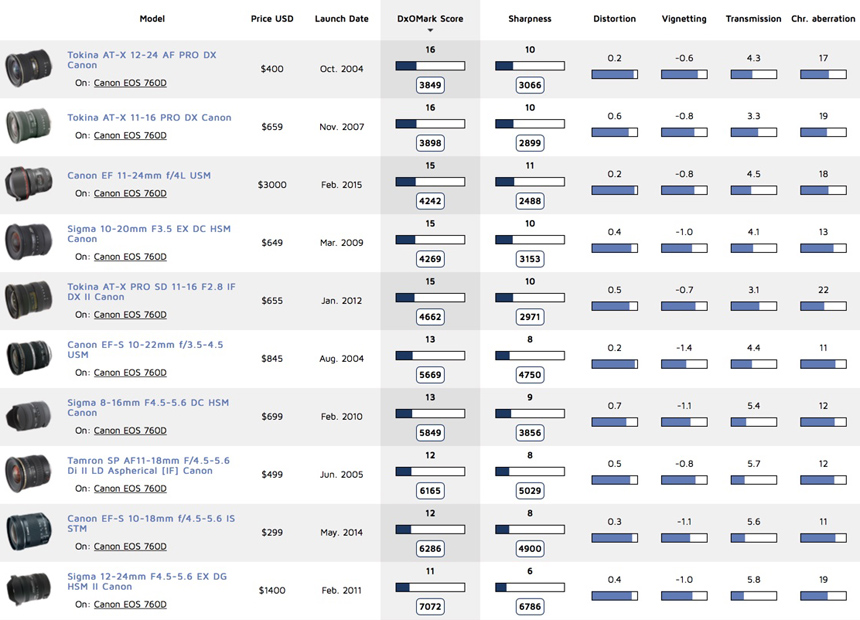
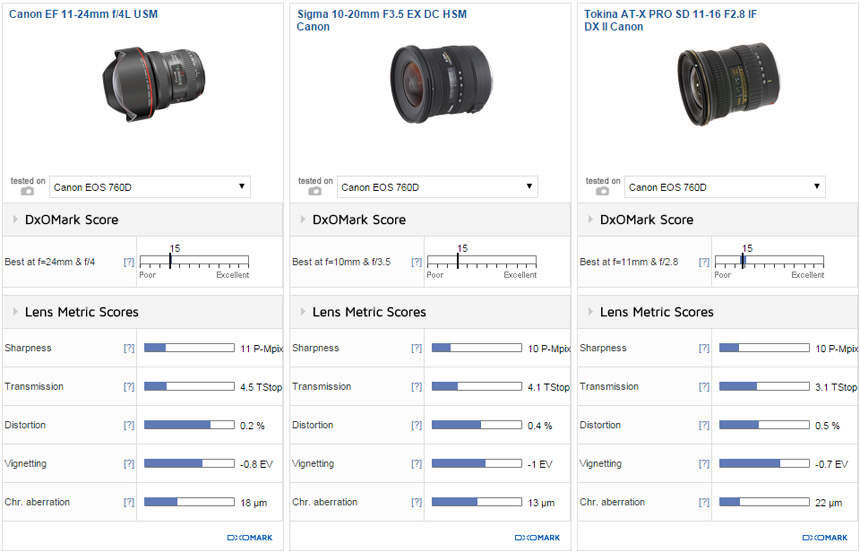
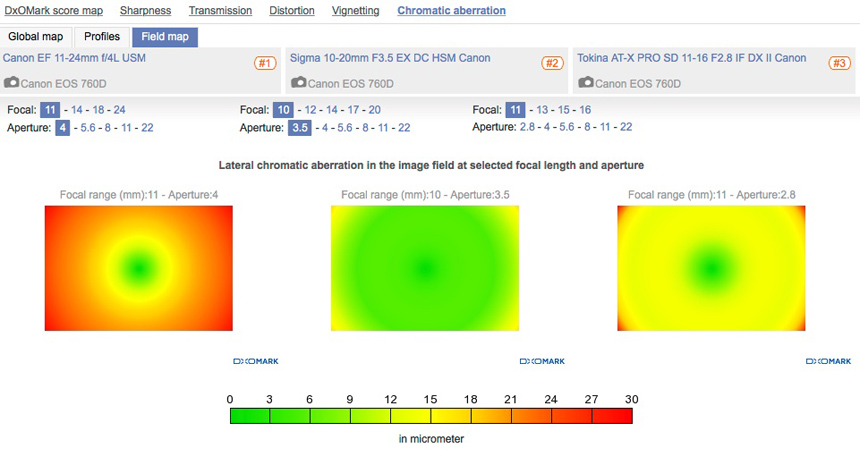
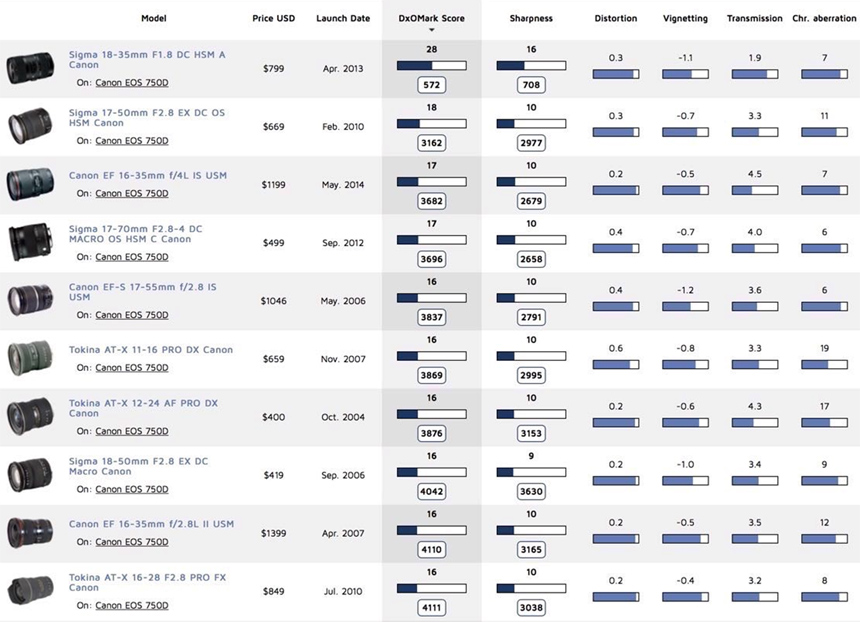

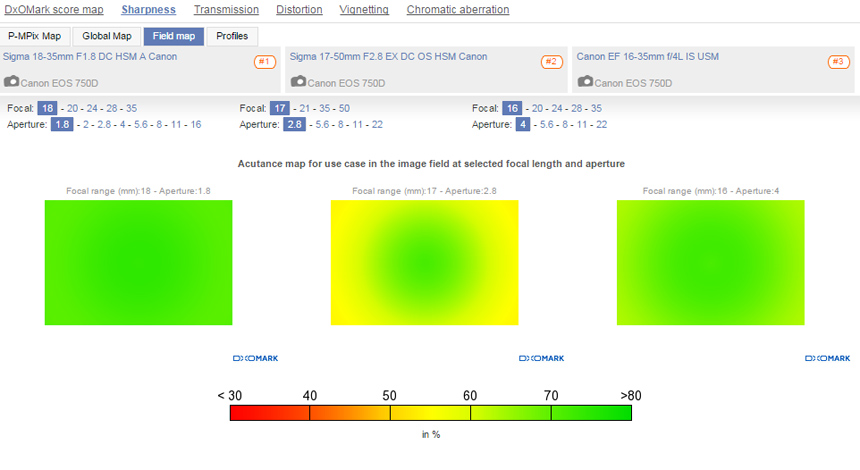

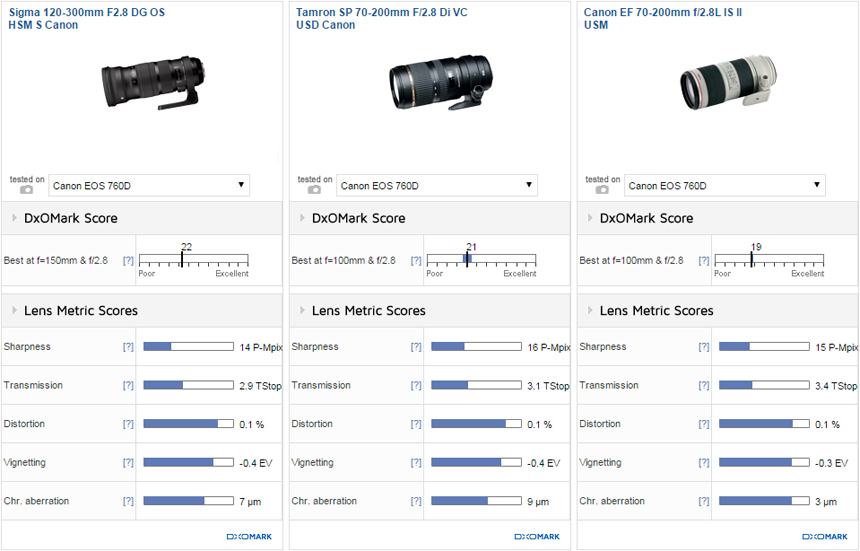

DXOMARK encourages its readers to share comments on the articles. To read or post comments, Disqus cookies are required. Change your Cookies Preferences and read more about our Comment Policy.